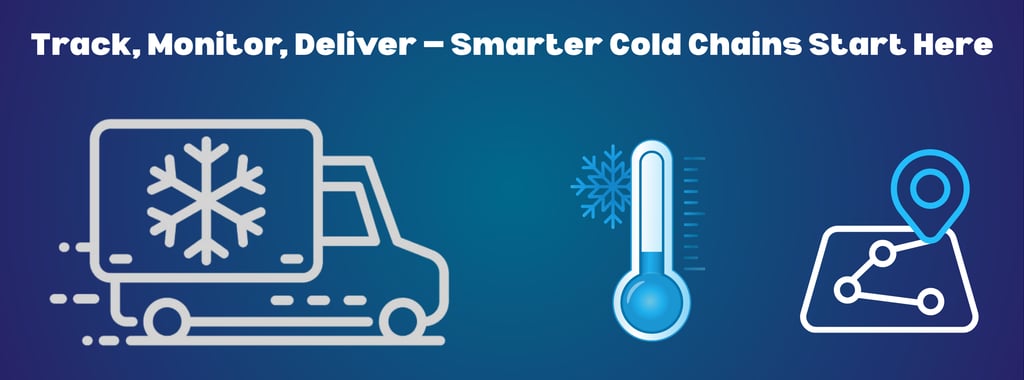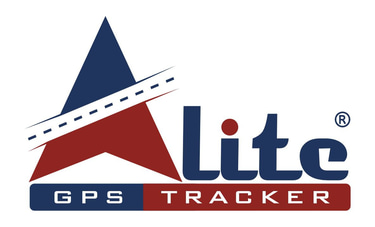Revolutionize Your Tracking Experience – Real Time, Reliable & Effortless tracking solutions
+91 - 7665666631 (Toll Free)
Revolutionizing Cold Chain Logistics with IoT: A Comprehensive Guide to Smart Monitoring through GPS and Sensor Integration
Discover how IoT-based cold chain solutions using GPS trackers, temperature sensors, and telematics systems are revolutionizing the transportation of perishable goods by offering real-time monitoring, enhanced security, and regulatory compliance.
Chandra Singh
5/10/20255 min read


Introduction
The modern logistics ecosystem is heavily reliant on the uninterrupted movement of goods across vast distances. Among these, the transportation of perishable goods—such as pharmaceuticals, fresh produce, frozen food, dairy, and chemicals—poses unique challenges. Slight temperature variations can compromise product quality, safety, or efficacy.
Enter IoT-enabled cold chain monitoring solutions. By combining GPS tracking, temperature and humidity sensors, door status monitors, and real-time cloud-based analytics, these systems are reshaping how perishable goods are managed during transit.
1. Understanding the Cold Chain Ecosystem
The cold chain is a temperature-controlled supply chain that includes all segments from production, storage, and distribution to final delivery. A robust cold chain ensures the integrity of products sensitive to temperature changes and prevents spoilage.
Key challenges faced in traditional cold chains include:
Inability to detect temperature anomalies in real time: Traditional systems often rely on manual temperature logging, which means issues are only discovered after the damage has already occurred.
Manual logging and poor traceability: Without digital systems, it's difficult to track what went wrong, where, and when. This lack of traceability can hinder quality assurance and regulatory compliance.
Lack of route optimization: Inefficient routing can result in longer transit times and increased fuel consumption, potentially leading to temperature excursions.
Difficulty maintaining consistent communication across fleet vehicles: Inconsistent or lack of connectivity prevents real-time tracking and decision-making, leaving supply chain managers in the dark.
IoT transforms this landscape by enabling end-to-end visibility, real-time alerts, and data-backed decisions.
2. Essential Components of an IoT-Driven Cold Chain Monitoring System
A. GPS Tracking Devices with Telematics
These devices are not just about knowing where a vehicle is. They provide granular data on:
Real-time vehicle location tracking: Allows operations teams to monitor progress, manage exceptions, and coordinate deliveries precisely.
Geofencing and route deviation alerts: If a vehicle deviates from its assigned path, stakeholders are notified immediately, which can help prevent theft, unauthorized stops, or delays.
Integration with digital/analog sensors: GPS devices serve as a gateway to connect other peripherals like temperature or door sensors, collecting and transmitting their data to a central system.
Driver behavior monitoring (speeding, harsh braking): Driving habits affect the condition of cargo. Aggressive driving can damage sensitive goods or compromise vehicle cooling systems.
Remote immobilization or engine control (if needed): Fleet managers can disable a vehicle in case of theft or misuse, enhancing security.
B. Digital Temperature Sensors
Temperature sensors play a critical role in maintaining product quality:
Accurate readings with minimal deviation (e.g., ±0.5°C): High-precision sensors ensure that you know the exact temperature, not just an estimate.
Compatibility with RS485, 1-Wire, BLE interfaces: These protocols allow seamless integration with different types of GPS and telematics devices.
Configurable thresholds and hysteresis settings: Users can define acceptable temperature limits and buffer ranges to avoid false alarms.
Multi-zone temperature monitoring: Ideal for vehicles transporting different categories of goods with distinct temperature requirements.
C. Humidity and Door Sensors
These provide environmental context and access monitoring:
Humidity Sensors: Critical for items like flowers, produce, or pharmaceuticals, which require specific moisture levels to maintain quality.
Door Sensors: Detect when cargo doors are opened and closed. Alerts can be configured to:
Trigger if doors are opened outside of scheduled stops.
Correlate door activity with temperature spikes, helping identify potential sources of contamination or spoilage.
D. Fuel and Reefer Monitoring
An extended feature set to protect goods and improve fuel efficiency:
Fuel level sensors: Help detect theft or abnormal fuel usage, allowing better cost control.
Reefer diagnostics: Monitor the health of the refrigeration unit—including setpoint temperatures, compressor cycles, and power status—to detect and correct malfunctions quickly.
E. Cloud-Based Software Platform
The intelligence layer that ties everything together:
Real-time dashboards: Display live data from vehicles and sensors, offering a command center-like overview.
Alert configuration: Customize alerts based on roles and thresholds, sent via SMS, email, or mobile apps.
Historical data visualization: Review data trends to improve planning, compliance audits, and root-cause analysis.
Automated reporting: Schedule reports for delivery confirmation, compliance proof, or SLA tracking.
Mobile access: Enables fleet managers and clients to monitor shipments on-the-go.
3. Practical Applications and Use Cases
A. Pharmaceutical Cold Chain (2°C to 8°C)
Vaccines, insulin, and certain biologics require tight temperature control. Any deviation could render the medicine ineffective or dangerous. By using IoT sensors and GPS, stakeholders receive instant alerts on temperature breaches, enabling rapid response. The system also helps generate validated data logs necessary for regulatory bodies such as WHO, FDA, and EMA.
B. Frozen Food and Ice Cream Distribution (Below -18°C)
Frozen goods require sub-zero stability. IoT systems provide:
Instant notifications when a reefer malfunction occurs
Continuous monitoring during loading/unloading phases to prevent door-related temperature spikes
Energy usage optimization based on real-time cooling load
C. Export Shipments Facing Border Delays
Borders and customs delays are often unavoidable. IoT devices ensure:
Real-time condition reports that can be shared with customs or buyers
Assurance that quality standards were maintained throughout delays
Less dependence on manual inspections
D. Dairy and Fresh Produce Collection
Milk, cheese, fruits, and vegetables are highly perishable. Delays or mishandling can result in massive losses. Cold chain IoT enables:
Monitoring from farm to processing center
Detection of spoilage risks early, even before the vehicle reaches the plant
Automated temperature compliance logs for farmer payments and audits
E. Floriculture Supply Chain
Flowers are sensitive not just to temperature but also humidity and light. A combination of multiple sensors ensures:
Freshness during long transit
Real-time decision making on rerouting or replacing packaging if conditions fall outside thresholds
Reduction in spoilage and return rates
4. Benefits of IoT in Cold Chain Monitoring
1. Real-Time Visibility and Control
Gain up-to-the-minute insights on location, temperature, humidity, and vehicle health. Empower staff to make faster, data-driven decisions.
2. Proactive Risk Management
Instead of reacting to spoiled goods at the end, identify problems (e.g., reefer malfunction, door left open) the moment they arise and act immediately.
3. Enhanced Compliance and Traceability
Digital records offer full traceability of product handling. This is critical for food safety, pharma regulations, and insurance claims.
4. Reduced Operational Costs
IoT helps identify inefficiencies (fuel theft, unnecessary engine idling, inefficient routes) and improve vehicle performance, ultimately saving money.
5. Improved Customer Trust
Clients can receive live updates on cargo status, improving transparency and customer satisfaction.
6. Lower Product Losses
By catching issues in real time and allowing for rapid intervention, fewer shipments are spoiled or rejected.
5. Key Considerations When Choosing a Cold Chain IoT Solution
Sensor Accuracy: Choose sensors that offer precision readings within ±0.5°C to ensure reliability.
Sensor Integration: Ensure compatibility with common communication protocols like RS485, 1-Wire, or BLE.
Power Backup: Devices with internal batteries ensure monitoring continues even during power loss or reefer failure.
Data Frequency: Systems should allow configurable reporting intervals to suit different goods and transit durations.
Software Support: User-friendly dashboards, mobile access, multi-user permissions, and analytics are must-haves.
Remote Updates: Firmware Over-The-Air (FOTA) allows updating device settings without physical access.
Conclusion
In a world where product quality, safety, and compliance are non-negotiable, the role of IoT in cold chain logistics is nothing short of transformative. With the integration of GPS trackers, temperature and humidity sensors, and real-time software platforms, companies now have the tools to deliver sensitive goods with confidence.
From pharma to frozen food, from flowers to dairy, the smart cold chain isn’t a luxury anymore—it’s the new standard. Invest in IoT today, and ensure your cold chain is powered by intelligence, not just insulation.
Empowering Your Journey with Smart Tracking!
Fleet or Personal, We Track It All – Get in Touch
support@alitegps.com
Srag India Info Solutions © 2025. All rights reserved.
Info@alitegps.com
